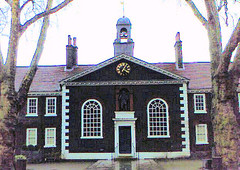By Natalie Bennett
The tradition of European painting started out small and intimate. Paintings were kept in cabinets, little more than book-sized, and brought out for intimates to share and admire. But around the 16th century that changed – they became larger, more items of general display to impress anyone who entered the room.
It was a change that didn’t happen in Indian painting, which remained small scale and usually on paper, maintaining a delicacy and intimacy lost in the larger European works. A new exhibition at the British Museum suggests what might have happened had European art stayed small, while also offering an insight into a tradition immediately, viscerally, foreign to our own.
The key difference is in realism, or the lack thereof. In Indian paintings psychological insight was regarded as more interesting than photographic reality – the aim is to convey information and elicit an emotional response, rather than accurately depict a single scene.
Having said all of that, the exhibition opens with its single large-scale work, an almost life-size image on paper of Maharana Karan Singh of Mewar (died 1628) painted a half-century after his death. Here we’re not far from the traditional European ruler portrait – all the symbols are there: imperial jewelry, weapons and sash, and he holds a flower just as Mughal emperors did in their portraits.
But after that the visitor familiar chiefly with European traditions is on unfamiliar ground, and will quickly learn new terms, and new ways of looking at paintings.
Continue reading
